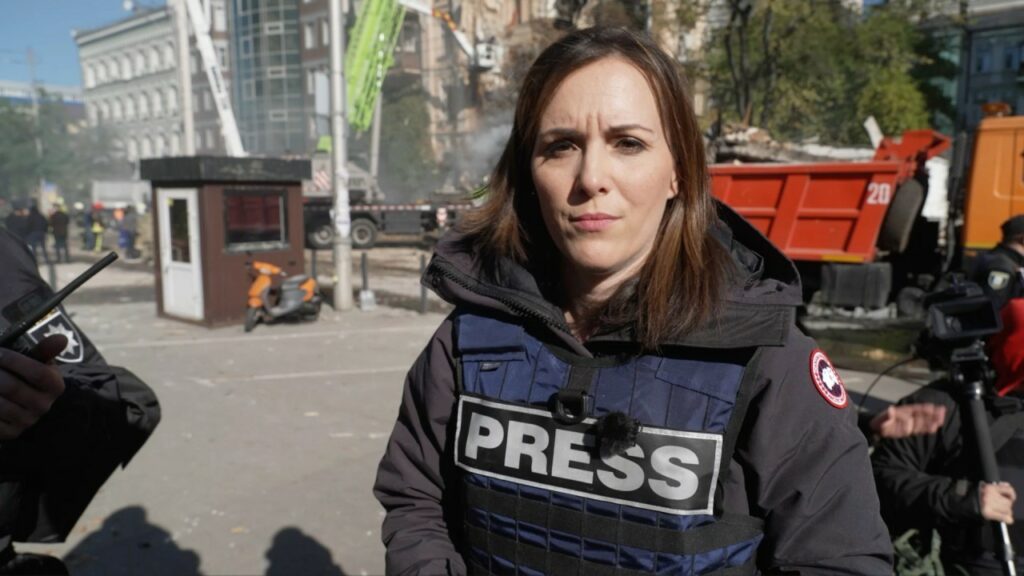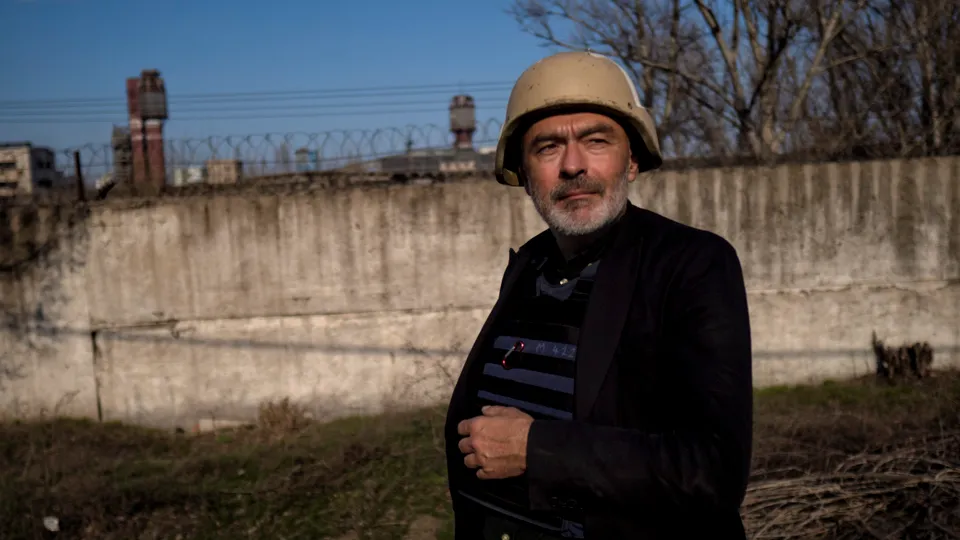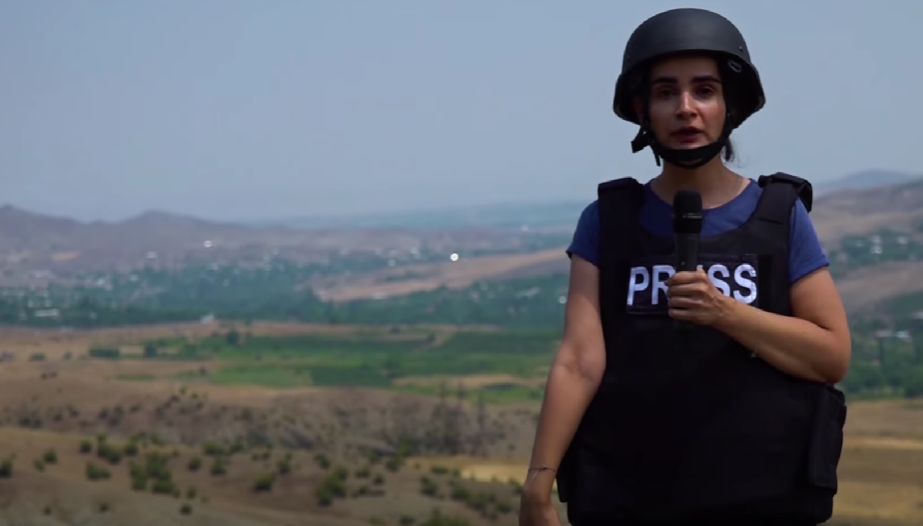by Zhanna Avagyan
“Are you a war correspondent or wife in my bed?”
This is what Hemingway wrote to his wife Martha Gellhorn, who was among the first female war correspondents covering World War II. 100 years later, war reporting remains widely regarded as men’s domain where sexist comments and behavior is almost part of the game.
Women’s involvement in war reporting traces back to the mid-nineteenth century, when they started covering events like European revolutions and the US Civil War. As the twentieth century unfolded, more women began reporting on conflicts, particularly during the First and Second World Wars and the Vietnam War. This trend surged further in recent times, aligning with women’s empowerment, as news outlets sought journalists in regions like Iraq, Afghanistan, Pakistan, the South Caucasus, and Ukraine.
Nonetheless, female war reporters continue to face condescension and hostility from their bosses, colleagues, and the public. Many testimonies of female war reporters and reports from the UN suggest that they experience sexual violence. More alarming, they are discouraged by their entourage from complaining about assaults, so that they can keep working.
Based on a survey by the International News Safety Institute and the International Women’s Media Foundation in 2011, about 64% of female journalists have experienced some form of intimidation, threats, or abuse in relation to their work. This number is particularly high for those reporting from conflict zones. 48% have experienced physical violence, including sexual assault.
Although exact numbers can be elusive, it’s estimated that nearly 30% of journalists reporting from war zones are women. This is a significant increase from just a few decades ago.
The challenges are usually those we face in societies we report about, depending on the cultural, historical and political identity of a respective country or village we report from. There are certain interviews I was only able to carry out because I adhered to a certain type of clothing and/or because the cameraman was male or female (depending on the country). Compared to a few decades ago, when female reporters on the ground were still quite rare, I am seeing a change at various news organizations: more female journalists are being deployed, also to countries that were rather dominated by male journalists in the past.
Fanny Facsar, Senior International Correspondent DW (Deutsche Welle)
Gaining access to sources can be a double-edged sword for women. While in some cultures, female journalists might have better access to women and children, providing a broader narrative scope, in others, they are barred from speaking to male officials or entering certain areas, which limits their reporting capacity.

“In Saudi Arabia it was a huge advantage that I was a female journalist to report about the challenges women face in KSA. Sometimes it was the first question asked (‘Is it a male or female journalist?’) before I had access to a person I sought to portray. But there were also examples where for the simple fact of being a woman the interview subject did not want to share his story. In this situation as a journalist you try to find ways to report nonetheless. Fortunately, we are never alone, always in a team, and have insights from our local colleagues, producers and DW security team as well during our assignments,” Facsar says.
Female journalists often have an advantage in certain cultural contexts where they might be perceived as less threatening or more neutral than their male counterparts. This can pave the way for more open dialogues and honest reportage.

It is the particular part in Islamic societies, especially in very conservative areas like Afghanistan or Yemen, that foreign women have access to the male sphere because they are considered a kind of third gender. But they also have access to the women’s world, which is a completely closed shop to me. For instance, when we were doing something on women in Cabo we were collaborating with a female photographer and a female translator to get access to some parts I wouldn’t have been able to access and wouldn’t have talked to anyone. So basically, women in these societies see more gain than men can see.
Christoph Reuter, war reporter, DER SPIEGEL
The situation is the same for Armenian media. As most men in Armenia have completed military service, they are equipped with basic military knowledge. Consequently, in covering conflicts, the majority of media are more inclined to prioritize male journalists over females.
When the first bomb exploded in Stepanakert on September 27th, 2020, I knew I had to go. I went to the office on Sunday. We were discussing what to do. We would wait one more day to see how things were developing. By the following day, it was clear that this was not a skirmish, but the beginning of a chaos. I went straight to my chief and told her directly: “If you do not send me there, I will scream right now in the office.” She just replied: “Ok, go home and pack your stuff for several days.”
Ani Paitjan, CivilNet
During the 2020 Karabakh War, Ani Paitjan herself didn’t experience issues related to her gender, but she recounted stories she heard of women journalists being denied entry to certain dangerous zones that were accessible to male counterparts. The argument presented was that such places were not safe for women.

Women in general face a lot of discrimination because of their biological sex. During warfare they may not be taken seriously. They often reported that “War is for men” and under this principle, they were denied access to places or important interviews.
Ani Paitjan, CivilNet
It is evident that while the numbers of female war journalists are rising, there are still systemic challenges that need to be tackled:
Training and Resources – Media outlets could offer specialized safety training tailored to the needs of female journalists.
Support Networks – Establishing platforms where female journalists could share their experiences, seek advice, and foster collaborations.
Recognizing Value – The unique perspectives brought by women should not be sidelined but rather integrated into the mainstream narratives of war and conflict.
When the war in Ukraine began and I woke up to the sound of explosions in Kyiv on February 24th, I was not scared, we simply did our job, reporting what we saw unfold. Interviewing people who lost their relatives, or lost their limb due to mines for example is also difficult but one tries to create a level of professional distance to be able to tell a story. I am not necessarily seeking “frontline stories.” I try to focus on stories that may be overlooked – how various parts of society are affected by conflict and war, how it shapes society during the war, and what that may mean once that war is technically over.
Fanny Facsar, DW
The story of female war journalists isn’t just about the numbers; it’s about resilience, courage, and a commitment to shedding light on untold stories. As their representation continues to grow, it’s essential that the challenges they face don’t remain mere statistics but are actively addressed to ensure their safety and the continued diversification of war reporting.
This article was published within the frames of “Correspondents in Conflict” Project,
implemented by Yerevan Press Club and Deutsche Gesellschaft e. V. The Project is
funded by the German Federal Foreign Office within the “Eastern Partnership Program”.
The contents of this article are the sole responsibility of the implementing partners and can in
no way be taken to reflect the views of the Federal Foreign Office. #civilsocietycooperation
Zhanna Avagyan is a journalist at CivilNet, a Yerevan-based Armenian media outlet. She reports on a wide range of topics, from politics to technology to human interest stories and beyond. As Armenia and Nagorno-Karabakh were thrust into conflict over the last several years, Zhanna has been reporting from the frontlines to bring stories about war and humanitarian issues to audiences. She also conducts interviews and podcasts at CivilNet’s Studio.













